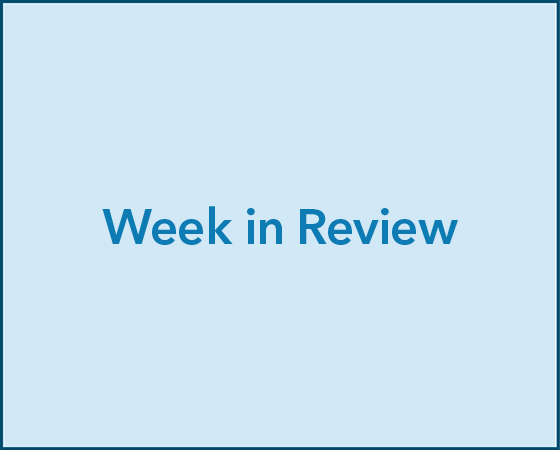Fixed Income Update
Treasuries swung sharply this week as inflation data sent mixed signals. A softer CPI reading on Tuesday, coupled with renewed White House calls for rate cuts, sparked a rally. By Thursday, however, a stronger-than-expected PPI report prompted markets to reassess.
In July, headline CPI rose 0.2%, a tenth below expectations, while core CPI increased an as-expected 0.3%. Year over year, headline inflation held at 2.7%, while core ticked up from 3.0% to 3.1%. The data suggest tariffs are still pushing prices higher, though less than initially feared. The effect appears split between dampening consumption and modestly increasing prices—a dynamic Chair Powell noted may be partly contained by the Fed’s restrictive stance. CPI details show tariff impacts across several product categories, though the effect appears to be easing for items such as clothing, home furnishings, and electronics.
Thursday’s PPI release pointed to building inflation pressures. All major components rose in July, with goods prices leading the gains. Service prices posted their firmest monthly increase since 2022. Final demand PPI rose 0.9% month over month, well above the 0.2% expected, and climbed 3.3% year over year versus a 2.5% forecast.
Market pricing now reflects about a 90% probability of a 25-basis-point Fed rate cut in September—down from earlier in the week when a full cut was priced in following Treasury Secretary Bessent’s suggestion of a 50-basis-point move. For a larger cut to gain traction, Powell would likely need to signal it at next week’s Jackson Hole Economic Symposium, or the August jobs report in early September would need to be notably weak. These two events are now key focus points for the market’s next move.
As of August 15, 2025
|
Index |
Current |
Last Week |
Wk Chg |
Last Year |
Yr Chg |
|
Tax-exempt MMF |
2.23% |
2.23% |
.00% |
3.34% |
-1.11% |
|
Taxable MMF |
4.28% |
4.28% |
.00% |
5.32% |
-1.04% |
|
2-Year Treasury |
3.75% |
3.76% |
-.01% |
4.10% |
-.34% |
|
5-Year Treasury |
3.85% |
3.83% |
.01% |
3.79% |
.06% |
|
10-Year Treasury |
4.33% |
4.28% |
.04% |
3.91% |
.41% |
|
30-Year Treasury |
4.93% |
4.85% |
.08% |
4.17% |
.76% |
|
5-Year Exp. Inflation |
2.44% |
2.47% |
-.02% |
2.01% |
.44% |
|
2-Year Corporate* |
4.09% |
4.13% |
-.05% |
4.55% |
-.46% |
|
5-Year Corporate* |
4.34% |
4.38% |
-.04% |
4.43% |
-.09% |
|
10-Year Corporate* |
5.00% |
5.01% |
-.01% |
4.82% |
.17% |
|
30-Year Corporate* |
5.67% |
5.69% |
-.02% |
5.22% |
.45% |
|
2-Year Municipal** |
2.39% |
2.29% |
.10% |
2.68% |
-.29% |
|
5-Year Municipal** |
2.67% |
2.49% |
.17% |
2.69% |
-.02% |
|
10-Year Municipal** |
3.47% |
3.33% |
.14% |
2.87% |
.59% |
|
30-Year Municipal** |
4.98% |
4.90% |
.08% |
3.97% |
1.01% |
|
10-Year German Govt Bond |
2.78% |
2.69% |
.09% |
2.26% |
.52% |
|
10-Year U.K. Govt Bond |
4.69% |
4.60% |
.10% |
3.92% |
.77% |
|
10-Year Japanese Govt Bond |
1.56% |
1.48% |
.08% |
.82% |
.74% |
|
10-Year Spanish Govt Bond |
3.35% |
3.25% |
.10% |
3.09% |
.26% |
|
10-Year Italian Govt Bond |
3.59% |
3.47% |
.11% |
3.63% |
-.04% |
|
Fed Funds |
4.50% |
4.50% |
.00% |
5.50% |
-1.00% |
|
Prime Rate |
7.50% |
7.50% |
.00% |
8.50% |
-1.00% |
|
Dollar*** |
$97.87 |
$98.18 |
-$0.31 |
$102.98 |
-$5.11 |
|
CRB |
$295.09 |
$294.07 |
$1.02 |
$277.34 |
$17.75 |
|
Gold |
$3,337.10 |
$3,439.10 |
-$102.00 |
$2,453.10 |
$884.00 |
|
Crude Oil |
$63.20 |
$63.88 |
-$0.68 |
$78.16 |
-$14.96 |
|
Unleaded Gasoline**** |
$2.08 |
$2.09 |
-$0.01 |
$2.20 |
-$0.12 |
Note: Municipal yields are as of the previous business day.
* Composite A
** General Obligation AA+
*** Int'l value of the U.S. dollar (Avg. exchange rate between the dollar and 6 major world currencies).
**** Futures price per gallon

Stock Market Update
Stocks continued to charge higher this week. The Dow Jones Industrial Average (Dow) rose by 1.68%, the S&P 500 gained 1.26%, the Nasdaq Composite rose by 1.23%, and the Russell Mid Cap Index gained 1.70%. But the “star” of the show was the small-company oriented Russell 2000, which rose by a spectacular 3.66%.
A key driver behind this week’s small-capitalization rally was the in-line July Consumer Price (CPI) Index reading on Tuesday. The report fueled hope that the data was benign enough for the Federal Reserve (Fed) to reduce interest rates in September against the backdrop of recent disappointing non-farm payroll data. Small companies, compared to their larger peers, typically rely more on credit (thus, more debt-laden balance sheets) and their operations are more domestically oriented. So, they are more sensitive to rate increases and decreases because of the effect rates have on their debt service. On Thursday, the Russell 2000 sold off sharply in reaction to the hotter-than-expected Producer Price (PPI) Index data, which took the wind out of the sails of a possible September rate cut. But, the rally in the front half of the week far offset the Thursday sell-off.
This week also helped the S&P 500 join the Nasdaq Composite in regaining double-digit year-to-date gains. After the painful market correction in mid-February through early April, the subsequent rally has lifted the Nasdaq Composite to a gain of 12.87% year-to-date and the S&P 500 to 10.84%. The Dow and Russell Mid Cap Index are working their way to double digit gains, up 6.61% and 7.64%, respectively. However, the Russell 2000 is a ways away, up 3.93% (although this week’s strong gains helped).
As alluded to in the commentary above, inflation data was the focal point this week. On Tuesday, the July core CPI print was up 0.3% month/month, in line with consensus. Annualized core CPI of 3.1% was slightly higher than the 3.0% expected. While takeaways regarding tariff impacts were mixed, they weren’t as onerous as feared. The market interpreted the data as stable enough for the Fed to ease in September, particularly given the weak July jobs report and the sharp 258,000 downward revision in the May and June numbers (and suggesting that the labor market has been slowing over the past three months). The data was a “not as bad as it could have been” boost to investor sentiment and fueled a nice rally on Tuesday. After the data was released, speculation surged about the potential for at least an 0.25% rate cut (and potentially an 0.50% cut) in September.
However, an offset to those hopes came on Thursday. The July core PPI reading of 0.9% month/month came in well above the 0.2% consensus expectation. Annualized July core PPI of 3.7% was also much hotter than the expected 2.9% and June’s 2.6% reading. This was a notable contrast to the CPI report and threw water on the market’s hopes for a September cut.
The 2nd quarter earnings season calendar was much quieter this week. A modest 8 of the S&P 500 companies reported their quarterly results. Just over 90% of S&P 500 companies have now reported their quarterly earnings. The “blended” (results from companies that have reported + expected results from those yet to report) earnings growth rate now stands at 11.8%, well ahead of the 4.9% expected at the end of the 2nd quarter. In addition, 81% have beaten consensus EPS expectations, above the 77% one-year average. In aggregate, companies are reporting earnings that are 8.4% above expectations, better than the 6.3% one-year average positive surprise rate.
As of August 14, 2025
|
Index |
Current Week |
Month of Aug. |
YTD |
|
Dow Jones Industrial Avg. |
1.68% |
1.80% |
6.61% |
|
S&P 500 |
1.26% |
2.08% |
10.84% |
|
Nasdaq |
1.23% |
2.81% |
12.87% |
|
MSCI EAFE |
1.49% |
4.01% |
22.99% |
|
Russell Mid Cap |
1.70% |
0.80% |
7.64% |
|
Russell 2000 |
3.66% |
4.01% |
3.93% |





